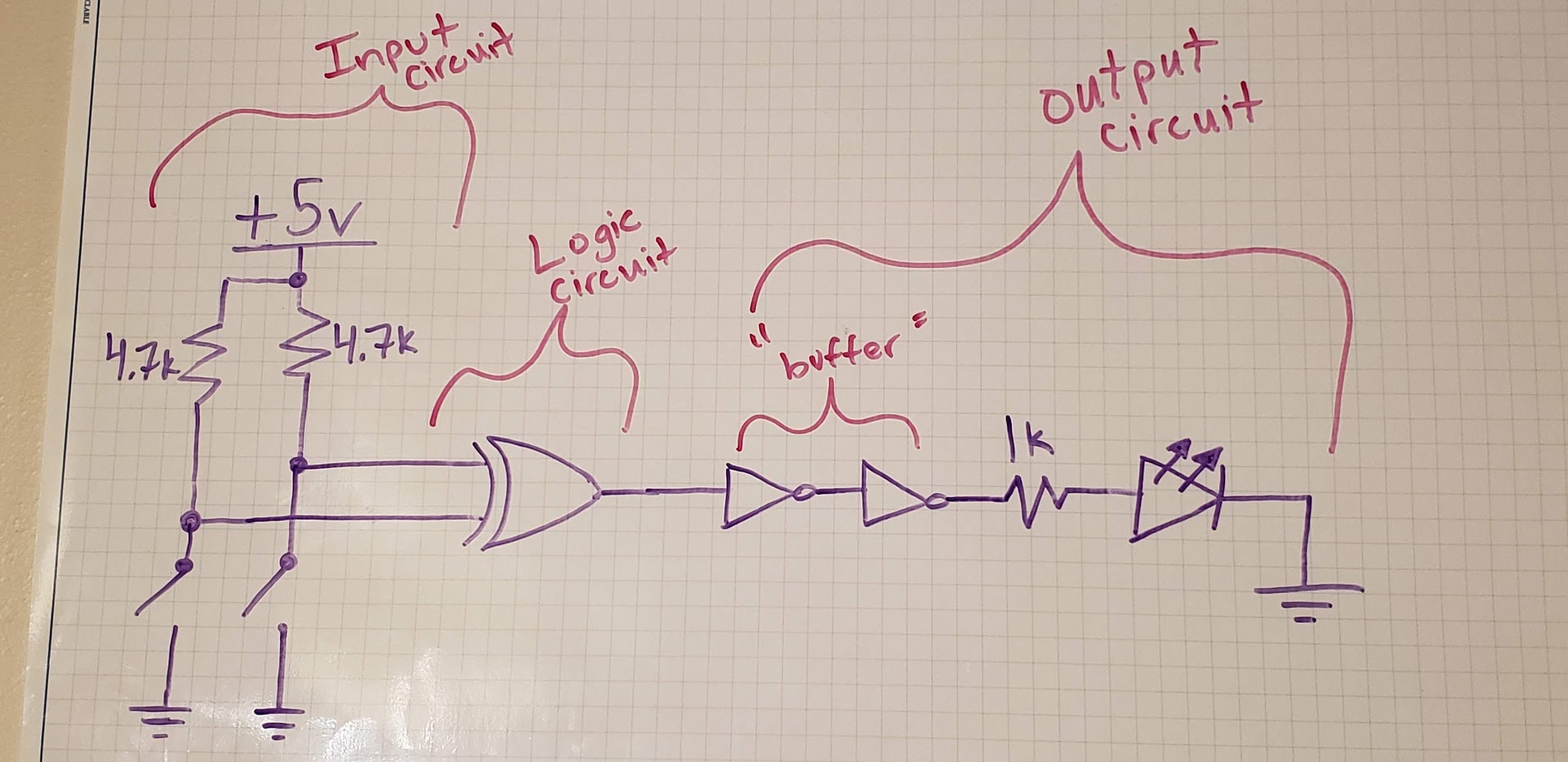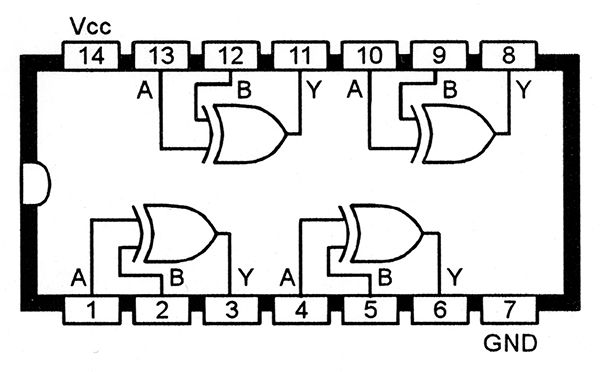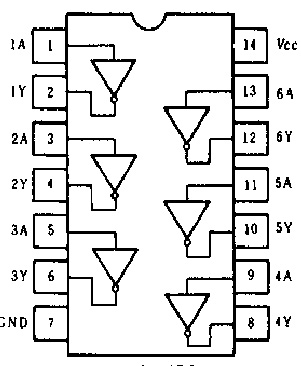Description
In our second lab, you and your partner will build a complete circuit (input, logic, and output), as we discussed in class.
Safety First
You are dealing with live power. Be mindful of the current and voltage you are supplying to the circuit. A shock of 0.01A of current will hurt, and a shock of 0.09A will send you to the hospital, or worse. Keep water and other liquids off of your working surface. After building your circuit, you should only be touching the dipswitches on the breadboard (if any), and the power switch of the PSU. If it did not operate as expected, first power off the PSU, and then operate on the circuit. In addition to your own safety, supplying a safe amount of voltage (4.9 to 5.0V) will ensure the full operation of your electrical components (LED, logic gates, etc), as they can handle a load of up to 5V before becoming damaged.
Procedures
Find your lab partner. Then, build the following circuit using your breadboard and necessary components (be mindful of the notch on each gate component -- refer to the pinout diagrams).

74HC86 (XOR gate) pinout diagram

74HC04 (NOT gate) pinout diagram

Talk to your partner about the schematic. Acquire necessary components. As discussed in lecture, it is important to build the circuit in sections. For instance, build the input circuit first and test it. Then, the logic circuit, and the output circuit. Building circuits is a lot like writing software. If you try to build it all in one go, you are bound to have errors.
Once you are finished, show your demo to the present TA, who will assign your grade out of five. Remember, you can continue to improve your circuit and show unlimited demos to the TA. Your TA will guide you toward receiving full points.
Teardown
Unplug your power supplies and place them on the middle table. Place all PSU wires in their respective boxes. Place wire containers in the large cardboard box (containing wires and breadboards). Any unused components should be put away.
Do not clear your breadboard, as you will continue to build off of it in its current state. Before you leave, place it on the shelf on your labeled piece of paper that you made in Lab #1.